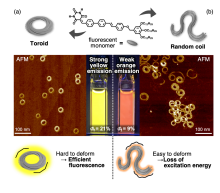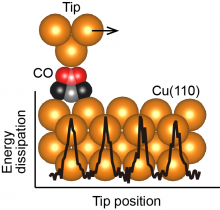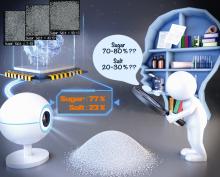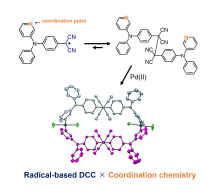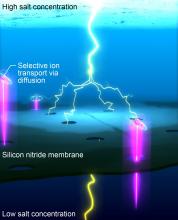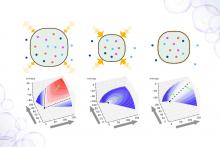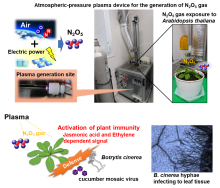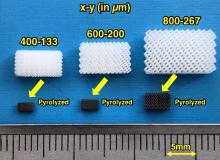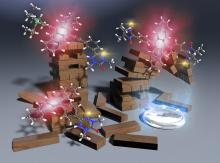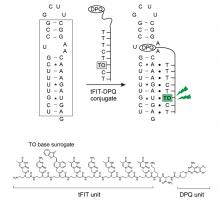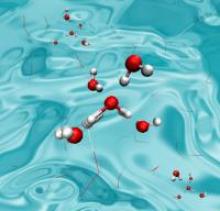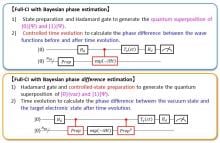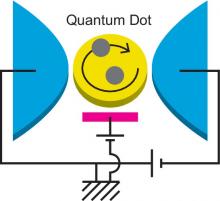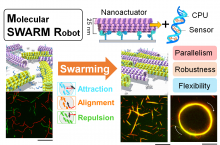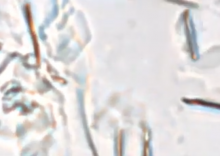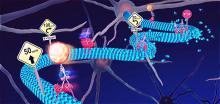Chemistry Physical chemistry
News
13 Feb 2024
The properties of supramolecular polymers are dictated by the self-assembled state of the molecules. However, not much is known about the impact of morphologies on the properties of nano- and mesoscopic-scale polymeric assemblies. Recently, a research team demonstrated how terminus-free toroids and random coils derived from the same luminescent molecule show different photophysical properties. The team also presented a novel method for purifying the toroidal structure.
03 Oct 2023
Friction, an everyday phenomenon, has perplexed scientists for centuries. Though extensively researched, our understanding remains fragmented, primarily due to the multifaceted interactions that span across varying scales. Achieving an accurate grasp of the precise contact conditions between objects has been a longstanding challenge, a
feat recently made possible through advancements in scanning probe microscopy.
29 Aug 2023
Machine learning model provides quick method for determining the composition of solid chemical mixtures using only photographs of the sample.
12 Jun 2023
Osaka Metropolitan University scientists synthesized a novel molecule by combining dynamic covalent reactions based on organic radicals and coordination reactions. They found that the two types of reactions do not inhibit each other. Their results suggest the possibility of synthesizing materials by combining different types of reactions, which is expected to lead to the construction of structures that have never existed before.
12 Oct 2022
Osaka University researchers developed a power generation system based on osmotic flow of ions through a membrane riddled with tiny nanopores. By optimizing the size and distribution of the pores, the team demonstrated a way to obtain clean energy from the oceans.
12 Sep 2022
Researchers at The University of Tokyo create a geometric representation of thermodynamic systems and apply it to self-replicating processes, which may help improve our understanding of the physical constraints of living organisms
19 Aug 2022
The flash of lightning and the dance of auroras contain a fourth state of matter known as plasma, which researchers have harnessed to produce a gas that may activate plant immunity against wide-spread diseases. The team, based at Tohoku University in Japan, published their findings on June 24 in PLOS One.
05 Aug 2022
New, easily fabricated, high performance carbon microlattice electrodes could soon be used to make cheaper batteries powered by readily available sodium ions. The approach was published by Tohoku University researchers and colleagues in the journal Small.
30 Jun 2022
Researchers at Kanazawa University report in The Journal of Physical Chemistry Letters how to simulate 3D atomic force microscopy images of out-of-equilibrium systems involving biomolecules. The approach makes use of a celebrated equation from thermodynamics applicable to non-equilibrium situations.
17 Jun 2022
A research group led by Professor Yoshio Teki of the Osaka Metropolitan University Graduate School of Engineering has succeeded in developing a new pentacene derivative that is more than 100 times more photostable than TIPS-pentacene, a photostable pentacene derivative. Additionally, the team has further clarified the ultrafast excited state dynamics in this system. In the pentacene moiety of this system, we were able to demonstrate that the transition from the excited singlet state to the excited triplet state occurs ultrafast in the time region of a 10-13 seconds. In purely organic materials without heavy atoms such as rare metals, such intersystem crossing usually occurs on time scales longer than 10-9 seconds. The empirical results of this study are expected to be applied as a method for stabilizing and developing light-unstable materials in the future.
06 Jun 2022
In order to quickly detect the presence of the influenza A virus, researchers developed a fluorogenic probe that could bind to the promoter region. A fluorogenic probe uses tiny molecules called fluorophores that emit light when a specific target is present.
28 Feb 2022
Scientists developed a procedure to reproduce the double peak feature of x-ray emission spectroscopy (XES) spectra in liquid water.
26 Nov 2021
In a continuing effort to improve upon previous work, a research team at the Graduate School of Science, Osaka City University, have applied their recently developed Bayesian phase difference estimation quantum algorithm to perform full configuration interaction (full-CI) calculations of atoms and molecules without simulating the time evolution of the wave function conditional on an ancillary qubit. Superior to conventional methods in terms of parallel execution of quantum gates during quantum computing, this new algorithm is expected to be much easier to implement in actual quantum computers.
23 Dec 2020
Osaka City University scientists have developed mathematical formulas to describe the current and fluctuations of strongly correlated electrons in quantum dots. Their theoretical predictions could soon be tested experimentally.
25 Sep 2020
Researchers at Osaka City University create a quantum algorithm that removes spin contaminants while making chemical calculations on quantum computers. This allows for predictions of electronic and molecular behavior with degrees of precision not achievable with classical computers and paves the way for practical quantum computers to become a reality.
18 Jun 2020
Scientists are looking for ways to make millions of molecule-sized robots swarm together so they can perform multiple tasks simultaneously.
13 May 2020
Insights into a flipping crystal could further research into the development of autonomous robots.
27 Mar 2020
A new technique allows researchers to test how the deformation of tiny train track-like cell proteins affects their function. The findings could help clarify the roles of deformed “microtubules” in traumatic brain injuries and in neurological diseases like Parkinson’s.
Events
Sorry, nothing coming up for this discipline
Researchers
Dr. Akira Kakugo is an Associate Professor at Hokkaido University. He has researched biomolecular motors and swarming of active matters.
Yoonhee Jang is a Professor at the Department of Energy Science and Engineering of Daegu Gyeongbuk Institute of Science and Technology, Korea
Giants in history
Sorry, nothing coming up for this discipline


